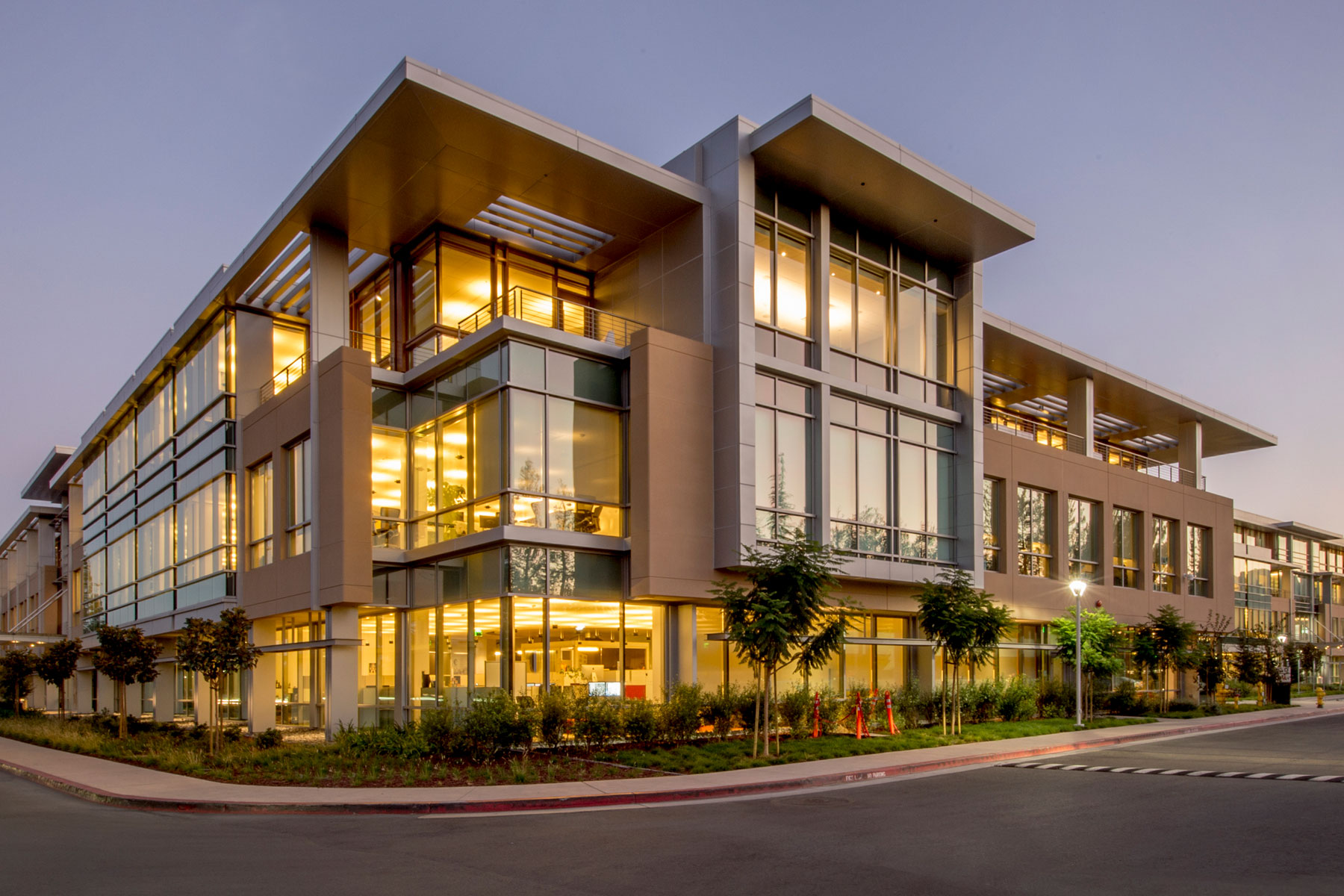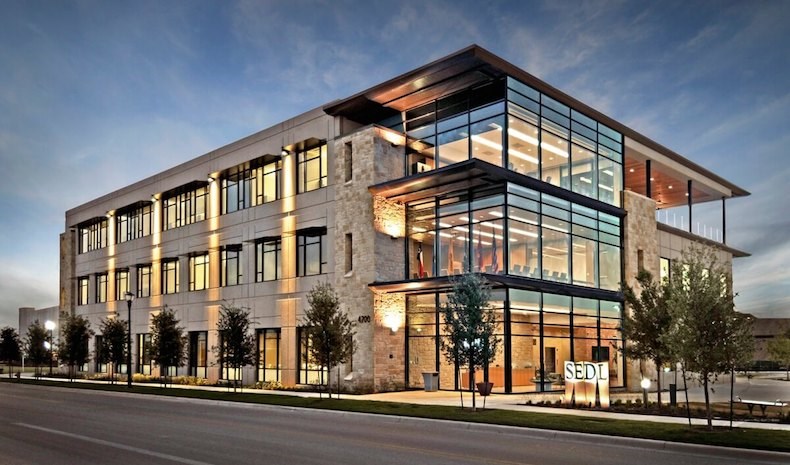Revealing the Comprehensive Services Given by Commercial Architects for Modern Advancement
Commercial Architects offer a vital function in contemporary advancement jobs. They mix style appearances with functionality while sticking to governing demands. Their proficiency prolongs beyond mere building and construction, incorporating lasting techniques and cutting-edge modern technologies. As they navigate complicated zoning regulations, Architects team up with different stakeholders to bring visions to life. This diverse approach questions about the advancing role of Architects in forming contemporary rooms and the effect of their deal with future advancements.
Comprehending the Function of Commercial Architects in Modern Developments
In contemporary urban landscapes, Commercial Architects play a vital function fit functional and visual spaces that meet diverse service demands. Their competence extends beyond simple layout; they navigate complicated zoning legislations, building codes, and ecological policies. By teaming up with clients, they determine specific requirements, making certain that each project lines up with the client's vision while likewise thinking about useful aspects such as sustainability and cost-effectiveness. Commercial Architects are adept at incorporating ingenious innovations and products right into their styles, improving both the performance and power effectiveness of buildings. They conduct extensive site evaluations to analyze the possible difficulties and opportunities provided by a place. Furthermore, effective interaction with contractors and various other stakeholders is necessary, making sure that the project proceeds efficiently from conception to conclusion. Ultimately, Commercial Architects are instrumental in producing areas that not just accomplish practical purposes yet additionally add to the total personality and vibrancy of city settings.
Idea Design: Changing Ideas Into Truth
Idea layout works as a crucial stage in Commercial style, where cutting-edge layout options arise from imaginative thinking. This process depends on collective ideation, combining diverse perspectives to fine-tune and boost initial concepts. As concepts materialize, they transform from abstract ideas right into tangible building realities.
Ingenious Layout Solutions
Transforming concepts into fact is the trademark of cutting-edge style options in Commercial architecture. These solutions blend imagination with functionality, addressing the one-of-a-kind demands of modern advancements. By leveraging sophisticated modern technologies and sustainable techniques, Architects craft spaces that are not just visually enticing but likewise efficient and versatile. Focus on individual experience drives the layout process, making certain that atmospheres foster performance and collaboration. Each project take advantage of a customized technique, where principles are carefully created to reflect the customer's vision while taking into consideration future trends. Innovative design services additionally focus on adaptability, permitting alterations in time as business needs develop. Eventually, these methods enhance the total worth of Commercial rooms, making them critical in today's affordable landscape.

Joint Ideation Process
Collaboration works as the backbone of the ideation process in Commercial style, cultivating creative thinking and advancement among varied stakeholders. Architects, customers, designers, and community participants engage in vibrant conversations, ensuring that all perspectives are taken into consideration. This comprehensive strategy enables the expedition of numerous design principles, motivating distinct services that line up with the job's vision. Through workshops and brainstorming sessions, ideas evolve and fine-tune, changing initial concepts right into tangible designs. Modern technology additionally plays a pivotal function, with tools such as Building Info Modeling (BIM) promoting real-time cooperation and changes. Ultimately, this joint ideation process not just improves the layout end result however likewise cultivates a sense of ownership and investment amongst all celebrations involved, resulting in successful Commercial growths.
Zoning Evaluation: Navigating Rules and Compliance
As designers commence on brand-new tasks, comprehending zoning laws is necessary to ensuring conformity and staying clear of pricey hold-ups. Zoning evaluation plays a crucial function in this procedure, as it includes assessing neighborhood zoning legislations that determine land usage, developing elevation, thickness, and troubles. Commercial Architects have the know-how to navigate these complicated policies, helping customers determine permitted uses and any type of required differences.
Sustainable Design Practices: Building for the Future
Lasting style techniques are progressively necessary in the domain name of Commercial style, specifically as ecological worries remain to rise. Architects focus on environment-friendly products, energy-efficient systems, and layout techniques that minimize waste and environmental effect. Integrating renewable resource sources, such as photovoltaic panels and wind turbines, permits buildings to produce their very own power and decrease reliance on fossil fuels.Furthermore, lasting layout emphasizes the importance of indoor environmental quality. This consists of making use of all-natural light, improving air flow, and selecting safe materials to improve occupant health and wellness and performance. Green roofing systems and living wall surfaces are also preferred functions that contribute to biodiversity and city cooling.Additionally, Commercial Architects frequently integrate water preservation methods, like rain harvesting and drought-resistant landscape design. Through these cutting-edge methods, they develop rooms that not only fulfill modern demands but additionally promote a sustainable future, dealing with the growing demand for liable growth in the modern globe.
Task Management: Ensuring Timely and Effective Implementation
Reliable project administration is necessary for making sure that Commercial design tasks are completed in a timely manner and within budget. This function includes a variety of responsibilities, consisting of the coordination of different stakeholders, timelines, and resources. Commercial Architects take advantage of their knowledge to create comprehensive job strategies that lay out important milestones and deliverables, enabling organized progress tracking.Regular interaction among employee and clients is vital, fostering openness and assisting in punctual decision-making. Danger administration strategies are additionally utilized to recognize potential obstacles early, making it possible for proactive solutions to be developed. By utilizing sophisticated job management tools, Architects can check job performance in real-time, making adjustments as necessary to preserve effectiveness.
Interior Decoration: Developing Practical and Visual Areas
Interior decoration plays a vital duty in enhancing both performance and visual appeal within Commercial rooms. Efficient space planning can Look At This enhance process and enhance individual experience, while aesthetic layout concepts contribute to an aesthetically attractive setting - commercial architects. With each other, these components create spaces that are not only functional however also inspiring
Area Planning Efficiency
While maximizing the energy of available room, Commercial Architects prioritize area planning performance to develop both practical and visually pleasing settings. This technique entails cautious analysis of the spatial design to ensure ideal use every square foot. Architects consider variables such as operations, availability, and all-natural light to enhance usability. By strategically positioning furnishings, equipment, and workstations, they facilitate movement and interaction among individuals, promoting performance. Furthermore, zoning different areas for details functions aids in taking care of sound and privacy, producing an unified environment. Through effective area preparation, Commercial Architects can transform restraints right into opportunities, making certain that each space satisfies the varied requirements of its occupants while adhering to governing needs and sector criteria.
Aesthetic Design Principles
Visual style principles play an important role fit atmospheres that are not only practical yet also visually enticing. These principles guide Commercial Architects in developing spaces that reverberate with users while improving brand name identity. Secret components include equilibrium, percentage, and harmony, which function together to create a cohesive appearance. Color schemes and materials are meticulously chosen to evoke preferred emotions and sustain the general style. Furthermore, lights plays an important role, affecting mood and presence while highlighting architectural attributes. By incorporating these concepts, Architects assure that spaces are not only sensible but view website also welcoming and motivating. Ultimately, efficient aesthetic design fosters a favorable user experience, encouraging engagement and contentment in Commercial atmospheres.
Collaboration With Stakeholders: Promoting Effective Collaborations
Effective partnerships in Commercial style hinge on efficient collaboration with stakeholders, ensuring that every voice is heard and valued. This joint method entails engaging different parties, consisting of customers, professionals, and neighborhood members, throughout the design and advancement process. By fostering open communication, Commercial Architects can deal with concerns, gather insights, and align the task's vision with stakeholder expectations.The integration of varied viewpoints improves creative thinking and advancement, causing more practical and cosmetically pleasing layouts. Routine meetings, feedback sessions, and workshops facilitate this dialogue, enabling Architects to adapt their plans in action to stakeholder input. On top of that, developing count on through transparency and liability enhances these partnerships, leading to a smoother project execution.Ultimately, the success of modern growths relies on the Architects' capacity to navigate and balance varying passions, producing a joint setting that promotes common goals and shared success.
Frequently Asked Concerns
How Do Commercial Architects Handle Budget Plan Constraints Throughout a Job?

What Kinds of Software Program Do Commercial Architects Commonly Use?
Commercial Architects typically utilize software such as AutoCAD for preparing, Revit for Building Details Modeling, SketchUp for 3D modeling, and project management tools like Microsoft Task to boost cooperation and simplify operations throughout the design process.
Can Commercial Architects Assist With Acquiring Financing for Projects?
Commercial Architects can assist in getting financing for projects by preparing in-depth propositions, aiding to articulate style visions, and providing economic forecasts that can improve the possibility of securing required financing from investors or economic institutions.
Just How Do Architects Guarantee Safety During the Building Refine?
Architects guarantee safety and security during building by applying strenuous design criteria, collaborating with designers, carrying out regular site assessments, adhering to local laws, and cultivating interaction Continue among all stakeholders to mitigate threats and promote a secure workplace.
What Recurring Assistance Do Architects Offer After Task Completion?
After project completion, Architects offer recurring support through maintenance examinations, performance analyses, and style adjustments. They ensure buildings fulfill developing needs, address prospective concerns, and preserve conformity with regulations, fostering a long-term connection with clients.